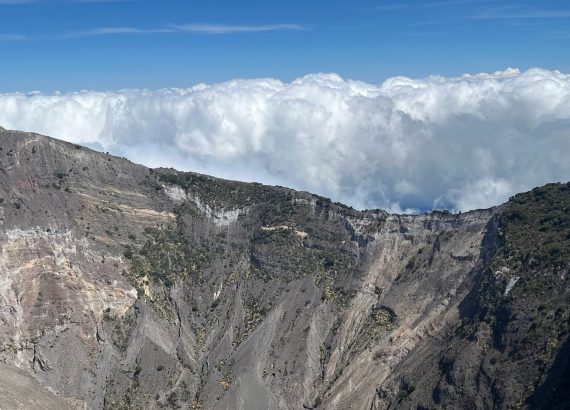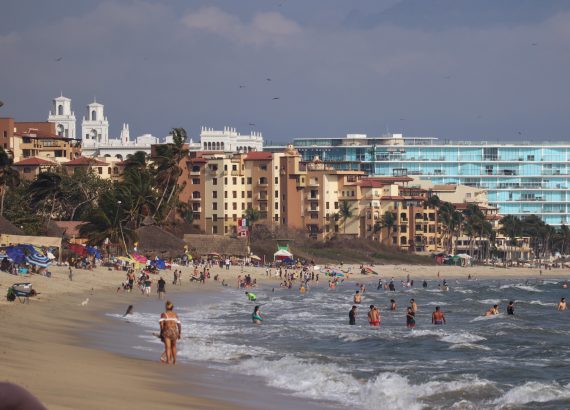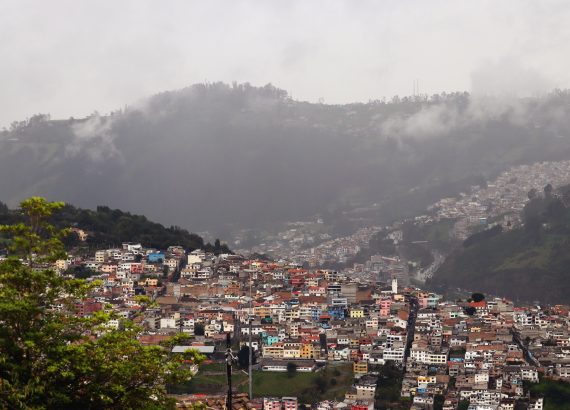There are certain times during the year that you may want to visit the city of Oaxaca (although most anytime would be good). December is clearly one of those seasons. A time of festivities–full of music, colorful traditional dresses, ancestral dancing, and unique cuisine. An urban city designated as a heritage site surrounded by the Sierra mountains at 5,000 feet above sea level. This city and the state of Oaxaca, is known for its indigenous art and handicrafts. Maker of at least 8 different types of mole’. The home of Mezcal with way too many varieties of this mystical libation to take with you. It is the homeland of the Mixtecos and Zapotecos, whose decedents today represent over 16 ethnic groups. An entirely distinct part of Mexico, perfect for celebrating the holidays and ringing in the new year.
But First a Bit of History
Oaxaca ( wuh-hah-kuh) is one of 32 states in Mexico, the most ethnically diverse, claiming at least 16 ethnic groups. Each with their own language, culture, and traditions using Spanish as the primary vehicle for communicating. This mountainous terrain was once occupied by the Aztecs and the Zapotecos later conquered by the Spaniards during the 15th century. The Mixtecos, also conquered by the Spaniards, resided mostly in the northern and western part of the Oaxaca state. Over the centuries, migration, assimilation, and interethnic marriages from one generation to the next have led to today’s ethnic diversity with over 10,000 rural villages. In 1987, both the colonial center of the city of Oaxaca and the Monte Albán archaeological site (one of the largest ancient cities in Mexico) were designated as UNESCO World Heritage sites fueling the growth of tourism. Today, many of these communities are concerned about the disappearance of their language and customs in what is already becoming a rapidly changing country.
The City of Oaxaca …A Tapestry of Culture and Traditions
I arrived in this city on December 9th as it was getting ready to celebrate the Feast of the Virgin of Soledad on December 18th at the Basilica of Nuestra Senora de Soledad, located in the same plaza where I was staying. She is the patron saint, queen, and mother of all Oaxaqueños (and she also looks like my neighbor). Just about every day there is a band, or a dancing group, or fireworks celebrating this special week-long holiday. By the 18th, the street in front of the Basilica was turned into a 3-day carnival of eateries, games and way too much retail. The line to enter the Basilica to receive the virgin’s blessing stretches at least half a mile continuously for two days and nights; quite the spectacle.
At the same time this is happening, the city is also preparing for the Christmas holidays. The Zócalo (Plaza de la Constitución) is the main tourist plaza within the historic center where the cathedral is also located. Every day and late into the night, this 6-block area is packed with residents, tourists, vendors, and entertainers, much like NYC’s Times Square. The Zócalo has both traditional and cultural performances most days from local community associations, church groups, schools, and dance/music clubs up to Three Kings Day. On December 23rd there is the presentation of “La Noche de las Rabanos.” This event consists of a mile long of works of art of typical figures and Christmas scenes. These works are created from radishes as the primary material that children and farmers used to partake in this competition. The line to view these works was an entire block long, and it was a chilly night. I got to see a bit from afar but skipped it, as my achy back was not having it.
Important to note, Oaxaca has 12 traditional holidays of which the three largest take place during the month of November (Dia de los Muertos), December (Christmas season) and Guelaguetza held in July (the coming together of all 16 ethnic groups to share and celebrate their customs and traditions).
Traditional Calendas Oaxaqueñas
Oaxaqueños celebrate achievements in their lives (weddings, baptisms, birthdays, holidays) using a tradition that goes back thousands of years known as Calendas”. It consists of a small festival or parade where anyone can join in the celebration. I witnessed at least 10 Calendas, mostly weddings and the celebration of the holidays. Calendas generally consist of two 20 feet puppets, usually a bridal couple, a very loud band and women dressed in traditional colorful clothes with a flower basket on their heads as they dance along with a huge spinning paper mache ball announcing the celebration. There are many versions of the Calendas based on what you are willing to pay. Regardless, it is very festive, engaging and a showstopper. Everyone immediately pulls out their mobile phones (including me) and walks or dances along with the group. It’s a great addition to any destination wedding if you are looking for something unique. I have plenty of photos that just may convince you.
Gastronomy and Mezcal
Oaxaca is both the home to mezcal, and many say it is the gastronomy capital of Mexico. There are “mezcalarias” just about everywhere, and tours to see how it’s produced and distributed. This smoky spirit has many versions as well as combinations. My preference was drinking it straight or combined with guayaba. You do feel it after your second shot. The food here, much like the rest of Mexico, is very starchy, salty, and seasoned. After three months in Mexico, my stomach was feeling the spices, and I had to switch to eating more in my apartment. Restaurants mostly use corn oil but be careful with street food or “mercados” as they tend to use pork oil (lard), a bit more favorable. Some of the foods this city is well known for that I tried were tamales, tlayudas, mermelas for breakfast, empanadas, tacos, enfrijoladas, carne asada and the 8 different moles with chicken. I skipped the chapulines (grasshoppers).
Chocolate is King
Let me rave a bit about Oaxacan chocolate. There are “chocolaterias” everywhere (no Starbucks coffee here). I recommend taking a workshop on the origin and making of chocolate drink using water, milk or corn known as “tejate”. You are guaranteed to be drinking 100% cacao beans with a spice of your choice whisked til foamy. The one with chili is quite good, as it is not strong, yet rich and favorable. Chocoholics take notice! (History Fact: cacao drinks were reserved for royalty among the Aztecs and Mayans).
Indigenous Art and Handicrafts.
Oaxaca is often mentioned as one of Mexico’s prominent art and cultural centers fueled by its many ethnic groups and many say the use of mezcal. There is a strong presence of woodcut prints, textiles, pottery, and wood carved sculptures. There are so many galleries, stalls and retail stores selling works of art and handicrafts from the many villages and towns that produce them. I took a tour to visit several towns that specialized each in the production of just one craft. There are also many collectives among artists sharing space as well as offering workshops and selling their works. During my stay, I signed up and attended several art classes and met up with a group of artists at a local art fair I was invited to. I found the marketplace for these works to be a bit saturated and wonder how financially successful many of them can become, especially during low seasons. There is so much of it that many are open long hours and during most holidays.
Monte Albán — An Archaeological Wonder
There are two archaeological sites in the state of Oaxaca. I managed to go the Monte Alban site, which is one of the largest ancient cities in Mexico and truly a wonder to be in its presence. I was blown away by the size and preservation of what was once controlled by the Zapotecos and then the Mixtecos, 1,500 years ago. The Spaniards did not demolish this site, most likely because of its location (6,400 feet above sea level) and the land not being of much use to them as it was eventually abandoned by the Mixtecos.
Walking the Streets of Oaxaca
In my travels, I intentionally want to walk, photograph, and observe how cities function. Specifically, what are the distinct features about their architecture, streetscape, and the day-to-day living of its residents? There is much I l would like to write about life in Oaxaca, but for now this is a brief summary. Much like the cities of Merida and Campeche, Oaxaca has preserved most of its colonial infrastructure supported by UNESCO. As the capital and the largest city in the state, it is quite urban, dusty, dense, and slightly timeworn. I found the architecture in the colonial center a bit worn and not as colorful as the other cities I visited, yet attractive enough. The buildings are slightly larger containing wrought iron on both windows and doors, much like other colonial cities. There are fewer abandoned properties and few for sale signs. Real estate here is booming and in conversation with folks there is concern about the escalating costs of rent causing displacement mainly among local businesses.
There are many galleries, art studios and retail shops throughout the district as well as neighborhood “mercados” (farmer markets) where you can buy organic produce, meats and household items. Mercados are popular than supermarkets, which are few and expensive. Churches built in the 16-17th centuries are mostly well preserved. There are quite a few of them, and the architecture is similar to other cities. Streets here are all one way, heavily driven by both cars and motorcycles. I found crossing the streets here confusing and a bit threatening as pedestrians in Mexico are not always given the right of way. Sidewalks are more spacious and less uneven than other colonial cities, although when approaching a sewage drain which is practically every block, get ready, the odor can be intense.
There are two city characteristics I found a bit puzzling and contradictory. For instance, it was painful and disturbing to see many women with infants and children begging on the street all day and into the night. There were also men and couples sitting on a sidewalk begging. Sometimes, you also see blind and handicapped people doing the same. I generally try to keep a stash of coins to have change in my pocket that I can give until it runs out. This is not discouraged by the city and happens primarily in the tourist areas. It was interesting to learn from others that begging among these folks is considered work and is a choice that many of them make…. A way of life here.
The other that I found curious and admirable was the number of solo vendors of all ages selling on the street. It is a daily grind for these vendors all day and night on their feet, hawking their wares from person to person. Many with their children on their side and, sometimes, they too are also selling. There are also so many creative entertainers performing for donations. A considerable amount of competition among so many who are trying to make a living…. A way of life here.
My photos attempt to capture the best and the not so good of what makes Oaxaca such an intriguing place to visit. As always, remember to click the center of the photos to access a full view of each photo. I have found my stay here enjoyable and truly a learning experience. I liked it enough to want to return some day and also visit other communities near the coast of the state of Oaxaca.
One Last Thing …
I want to continue to share a bit about my nomadic experiences as I travel through Mexico. After my quick detour to Miami for a week to partake in the city’s annual Art Basel, I stopped at a hospital to get a full checkup and learned I had a urinary tract infection. I waited til I got to Oaxaca to take the antibiotic, being that I have a sensitive stomach. Sure enough, my stomach fought through it, slowing me down as I settled in. I also found the altitude (5,000 feet above sea level) a bit much to get used to. Some days I felt a slight pressure breathing, mostly in the mornings. Drinking water helped with the breathing. Also, I noticed my joints hurt more, along with my suffering back. On average, I have managed to walk 3- 5 miles a day. I have not been lucky finding a gym that meets my standards and proximity. Therefore, walking and managing my food and water intake required my being vigilant.
As to my mental wellness, I found my third month on the road to be less isolating yet challenging. This is actually the first time I have not spent at least one of the season’s holidays with members of my family. I am gradually becoming more focus on my projects and doing a better job at both writing and reading (still way more to do). Oaxaca’s art scene has been inspiring, enabling me to take classes and meet people that I have enjoyed engaging with. I have also done a bit more shopping here than in the past months and have already shipped a package back home. One thing that requires some effort to manage is the pressure that comes with planning where I will sleep every month or week, along with getting use to a different place and bed. The packing and unpacking can also be nerve-racking. But I am not complaining or planning to change course yet.
On that note, I have already booked my next stay in the city of Puebla, a 4-hour drive using a car service which is less expensive and faster than a plane ride. See you in Puebla.


































































No Comments